

Agridisk
Egypt - Alexandria

Vertical farming | Definition , Systems & Equipment
Description: Vertical farming, a revolutionary agricultural approach, is redefining the way we perceive farming and food production. Operating under controlled-environment agriculture (CEA) technology, vertical farming diverges from traditional farming practices, seeking to optimize space-efficiency and resource conservation. This paper discusses the conceptual framework of vertical farming, its environmental effects, alongside its socio-economic implications. Contrasting these facets with conventional farming methods ensures the comprehensive understanding of the impact and potential of vertical farming. By dissecting these distinct strands, the aim is to shed light on how vertical farming functions and contributes to the creation of sustainable, resilient communities, and how it embodies a promising approach to adapt to an increasingly uncertain climatic future. Vertical farming, often perceived as a product of techno-optimism, has steadily ascended to prominence within scientific and agricultural arenas over the past few decades. Characterized by its intensive cultivation strategy that optimizes plant growth in vertically layered structures such as skyscrapers, shipping containers, or towers, this urban farming approach has been lauded for its ability to reconcile issues of food security, land space, and climate change. At its core, the infrastructural design of vertical farming is grounded in four fundamental principles: precision agriculture, plant physiology, building architecture, and systems engineering. These principles, when implemented collaboratively, create a controlled environment that seeks to maximize plant growth while minimizing resource usage. Precision agriculture represents the application of technology to optimize plant nutrition and growing conditions. The goal is to accurately provide plants with their nutritional requirements within a controlled environment. This, in combination with tailor-made LED lighting caters to individual plant physiological needs. Advanced vertical farms have even started using machine learning algorithms to predict plant behaviors, thereby adjusting growth factors for optimized yield. Understanding plant physiology is vital, as well. Crops are not passive beneficiaries in the vertical farm set-up. Their specific nutritional, environmental, and light requirements are part of what drives decisions about infrastructure design and resource allocation in vertical farming. Some crops are particularly suited to vertical farming; for instance, leafy greens that have short growth cycles and can tolerate low light intensity. Architectural design and systems engineering principles play an instrumental role in facilitating resource circulation within vertical farms. Vertical farm structures are typically layered in a manner to enhance light penetration and airflow. They are also designed to accommodate hydroponic or aeroponic systems that circulate nutrient-enriched water to plants' roots, eliminating the need for soil. This approach dramatically reduces water usage compared to conventional farming methods. The interconnected nature of resource utilization within vertical farms fosters an innate sustainability. Powered by renewable energy sources and integrating waste management systems, these farms aim to limit external resource inputs, minimize waste outputs, and reduce the environmental footprint. A key factor for these system’s potential scalability lies in technological advancements. Innovations in genetic engineering and crop management have the potential to further optimize crop growth in confined spaces, reduce resource requirements, and diversify the range of feasible crops beyond leafy greens and herbs. All told, vertical farming is a fascinatening example of sustainable agricultural practice that has been fundamentally shaped by multidisciplinary collaborations. It intertwines cutting-edge technologies and ecological principles to nurture a future where high-quality food production could be localized, sustainable, and indifferent to climate vagaries. Even as mysteries surrounding its economic viability and societal implications abound, it is undeniable that vertical farming marks an optimistic and intriguing shift in how humankind conceives of agriculture in the 21st century. The ascent of vertical farming, undeniably, represents a novel culmination of crossover disciplines but its roots are deeply embedded in traditional agriculture practices. As we plow through this topic, it becomes crucial to acknowledge the profound influence of age-old agricultural knowledge while evaluating the environmental footprint of vertical farming. An innovative pivot, vertical farming circumnavigates many environmental challenges encountered by conventional farming. Soil degradation, for instance, is a downside of traditional farming, stemming from decades of intensive tilling, excessive fertilizer usage, and mismanaged irrigation practices. Vertical farming offers a respite here - the soil-less nature of these systems drastically diminishes the soil erosion problem. Arguably, the life-blood of conventional agriculture, soil, is deftly replaced by the technology-backed hydroponics, aeroponics, or aquaponics. It's worth highlighting the stark difference in the management of water resources. Traditional agriculture exuberantly guzzles water - accounting for about 70% of global freshwater withdrawals. In contrast, the closed systems of vertical farming enable full control over water usage. Rain or shine, whether in the desert or in a drenched locality, these meticulously designed indoor systems manage to conserve water up to 95%. The battle against pests is another vista where vertical farming shows off its environmental finesse. Crop losses due to pests and diseases have been an age-old adversary of traditional farmers. In contrast, vertical farms, by virtue of their controlled conditions, drastically cut down the deployment of pesticides. The result is twofold - healthier produce and a lesser toll on the environmental health. Then comes the question of land-use. With a burgeoning global population still on the rise, land constraints for traditional farming have become a prominent issue. Here, vertical farming strikes a chord with its remarkable space efficiency – an advantage owed, in part, to a sophisticated understanding of plant physiology and systems engineering. A vertical farm can produce equivalent yield on less than 1% of the land used by conventional methods. On the flip side, it's critical to note that vertical farming’s energy consumption, driven mostly by artificial lighting and indoor climate control, could be greater than traditional farming. However, optimal resource utilization, improved energy-efficient technologies, and the integration of renewable energy sources are continually diminishing this constraint. In a nutshell, the transition from traditional to vertical farming portrays a fascinating paradigm shift. By harnessing the scientific advancements of our times while staying rooted in the wisdom of traditional agriculture, vertical farms strike a promising balance. They achieve higher crop yields with fewer resources, marking a step towards sustainable agriculture that leaves lighter footprints on our planet. So, although the journey has just begun, vertical farming is poised to redefine the environmental contours of agriculture in the coming years. Beyond the analysis of the architecture, technology, and precise agriculture systems in vertical farming, there is a vast ocean of potential for profound economic and social transformations promised by this innovative agricultural technique. The implications extend far beyond the possibility of soil-less cultivation, advanced genetic engineering, or the efficient resource utilization, contributing to sustainability by mitigating the harmful impacts of traditional farming practices. Consider, for instance, the issue of burgeoning urbanized populations. We are witnessing the phenomenon of unprecedented urban growth, with a projected 68% of the population to reside in urban areas by the year 2050, according to United Nations estimates. With less arable land available for traditional farming, vertical farming comes to the fore as a viable solution. It deftly deals with the challenge of less physical space and empowers urban communities to grow their own food, potentially leading to decentralization in agriculture. This decentralization holds significant economic benefits. While it costs significantly more to grow crops indoors in a vertical farm (owing to lighting, heating, and other operational costs), the shorter growing cycles and year-round production capabilities lead to potentially higher yields. Further, the closer proximity to urban markets means lower transportation and storage costs, translating into fresher produce at competitive prices. This transform the traditional economic model of agriculture, potentially revitalizing local economies and fostering agricultural employment in urban settings. Socially too, vertical farming holds revolutionary implications. It brings the production of food closer to the consumer, engendering a more direct connection between the two. This could foster an enhanced understanding of food production, greater respect for the effort involved, and more informed consumer choices – a societal shift from passive consumerism to active participation. Moreover, vertical farming could contribute to increased nutritional security in urban areas. With the ability to grow diverse crops, from vegetables and greens to berries and small fruits, vertical farming can provide a fresh and varied supply of nutritional food, counteracting 'food deserts' where access to affordable, nutritious food is limited. However, just as every coin has two sides, so does the potential of vertical farming. It is vital to also acknowledge that it may lead to an economic divide between those who can afford high-tech farming equipment and those who cannot. The socio-economic impacts of technologization and potential job displacement must be diligently examined. In conclusion, while vertical farming is couched with meaningful potential and promising prospects for economic and social transformation, it is equally important to engage with the challenges and imperfections. This is the only way to generate rigorous, enlightening, and consequential research that can propel humankind toward a sustainable and equitable future. The dialogue on vertical farming, in all its dimensions, must persist. Through the exploration of various angles of vertical farming, it becomes evident how this innovative method could potentially shape the future of agriculture, both on an environmental and socio-economic level. Embodying benefits such as the reduction of land and water use, waste production, and the use of pesticides and fertilizers, vertical farming presents a more sustainable and eco-friendly solution compared to traditional farming practices. Simultaneously, it paints a promising picture for job creation and the reinvigoration of urban spaces. Understanding the comparative costs of traditional and vertical farming will further underline its economic viability and potential to ensure food security amidst climatic uncertainties. Therefore, embracing vertical farming and further research into improving its technology and efficiency could decide the sustainability and resilience of our world's food production systems. As the world's population continues to grow exponentially, so does the demand for food. This growth manifests strain and pressure on traditional methods of agriculture, which are becoming increasingly unsustainable due to various factors such as climate change, land degradation, and loss of biodiversity. Venturing into an alternative form of agriculture known as vertical farming, a revolutionary practice that maximizes the use of space and resources, provides a promising solution. This system, leveraging technological advancements like aeroponics, hydroponics, and aquaponics, not only offers the feasibility of growing food in urban settings but is also a more sustainable form of farming with profound environmental and economic implications. Vertical farming is an innovative, space-efficient technique that challenges how societies view traditional farming. At its core, vertical farming facilitates the growth of vegetation in vertically stacked layers, often integrated into urban structures like high-rises or skyscrapers. While it offers infinite possibilities in circumventing agricultural limitations, the design and implementation aspects are intricate and multidimensional. This article delves into the pivotal considerations necessary for optimally designing and implementing vertical farming systems. A fundamental concern in vertical farming systems is the optimization of space. As spatial confines often limit conventional farming practices, vertical farm designs must utilize vertical space inventively. Crucial considerations here would include the integration of mediating technologies, such as artificial lighting and hydroponic systems, to augment plant growth. Furthermore, planning for functionality in terms of accessibility for maintenance and harvesting is equally vital. Lighting, indispensable for photosynthesis in plants, necessitates meticulous attention in vertical farm design. Traditional farms benefit from natural sunlight, which, unfortunately, is a luxury unavailable for layers deep into the vertical farms. Hence, the implementation of artificial lighting - predominantly LED lighting due to its energy-efficiency - is a prerequisite. Deciding the intensity, duration, and spectral quality of the light are key considerations to evoke the most optimal growth responses in cultivated plants. Closely related is the efficient planning of energy usage. Vertical farming systems are energy-intensive, owing to the reliance on artificial lighting, water pumps, and climate control systems. As such, energy audits are key to ascertaining the most efficient operational strategies and mitigating exorbitant energy expenditures. Water and nutrient delivery systems are also integral. Unlike conventional farming, where roots access water and nutrients from soil, vertical farming commonly uses hydroponics - a method that grows plants in nutrient-dense water solutions, or aeroponics – where nutrients and water are sprayed directly at the roots. These systems ensure the precise tailor of nutrients to the plant needs, optimizing growth while conserving water resources. Pest management assumes an important role in vertical farming as well. Altering the growing environment substantially reduces pest populations in vertical farms. However, the enclosed nature of these farms could also accelerate the spread of pests and diseases if they do infiltrate. Therefore, implementing robust surveillance systems and biological control measures is imperative. Lastly, it is essential to understand and factor in the market dynamics of the produce from vertical farms. It is necessary to gauge consumer acceptance, price willingness, and the overall demand of the targeted market to ensure the economic viability of vertical farming systems. Thus, the design and execution of vertical farming systems are laden with multifaceted considerations. Interconnected elements like spatial application, artificial lighting, energy efficiency, nutrient delivery systems, pest management, and market dynamics all require careful contemplation. However, if addressed meticulously, these elements coalesce to form a sustainable and revolutionary approach to agriculture that can revolutionize food production on a global scale. The advent of epoch-sweeping technological revolutions has unquestionably bolstered the progression and effectuality of vertical farming, catapulting it into new heights of agricultural innovation. The perennial march of cutting-edge technologies has, beyond any doubt, enabled significant aspects of vertical farming such as precision farming, sophisticated waste management, and data-driven decision-making systems. Undeniably, precision farming has emerged as a focal point in vertical agriculture's ever-evolving narrative. Advanced sensor technologies, driven by Internet of Things (IoT) ideology, capably support the system's struggle for meticulous control over the crop microclimate. By furnishing exhaustive, real-time information on critical growth variables like temperature, humidity, pH, and nutrient concentration, these sensors render an unprecedentedly accurate picture of each plant's physiological condition—facilitating hyper-precise interventions and yielding staggering improvements in crop quality and productivity. Another technology transforming vertical farming relates to how waste is managed—an aspect frequently neglected in discussions around this subject. Recent innovations in biological waste treatment, like enhanced anaerobic digestion and vermicomposting, endow vertical farms with the ability to repurpose organic waste into valuable resources, such as fertilizers and biogas. The import of such ‘closed-loop’ systems is immense, as they usher in a harmonious integration of vertical farms into urban ecosystems by mitigating ecological footprints and promoting sustainability. Undeniably, no discourse on the technological impact on vertical farming can be complete without acknowledging the growing influence of data analytics. Surviving in the modern, innovation-driven agricultural landscape necessitates making informed decisions, and for this reason, Big Data has emerged as a game-changing tool. It has unshackled vertical farmers from the constraints of manual monitoring, heralding an era of machine learning and AI-powered analytics. The deployment of these advanced algorithms has made it possible to predict crop yield, schedule nutrient delivery, and even forecast disease outbreaks. The long shadow of technological advancements also extends over the sophisticated automation of vital processes, significantly reducing human intervention and the associated potential for error. With features like automated seed planting, crop monitoring, and harvest scheduling, the promise of an ever-efficient, always-optimized vertical farm inches closer towards reality. Interestingly, technological breakthroughs have also engendered new challenges, invoking a discourse on technology ethics and security. With increased reliance on data, cybersecurity has emerged as a prominent issue. There is, therefore, a growing rhetorical call for the development of robust security systems to prevent unwanted breaches and ensure data integrity. Vertical farming, no longer an abstract concept brewing in the minds of futuristic agronomists, is reshaping the contours of our urban landscapes, reshuffling the cards of food security, and reconceptualizing agriculture as an indoor, technologically advanced industry, thanks to technological innovations. As we forge ahead into a future defined by burgeoning cities and variegated climate challenges, the amalgamation of agriculture with technology in the form of vertical farms stands as a beacon of hope. Further to our discourse on vertical farming systems, let's delve deeper into a principle termed "Precision Farming". Precision Farming is integration of highly defined and locational information with agriculture. It forms an indispensable component of vertical farming, offering potential to augment agricultural efficiency and outcomes. Precise application of fertilizers, water, and light can significantly boost productivity, while reducing expenditure through optimization of inputs. The beauty of precision farming lies in its ability to streamline the resource usage, paving way for eco-friendly and sustainable agricultural practices. Technological Symbiosis: IoT and Advanced Sensor Technologies The efficacy of precision farming in vertical systems is amplified by the integration of advanced sensor technologies and Internet of Things (IoT). These cutting-edge tools measure and control aspects such as moisture levels, nutrient status, pH balance, and temperature in real-time, according to each plant's specific requirements. The sensor technologies go hand-in-hand with IoT, enabling remote monitoring and automation. Together, they form a conduit, a data-driven farming approach that maximizes yield and minimizes resource wastage. The collected data not just supports the real-time decisions but also aids in drawing insights for future improvements. This digital transformation of agriculture fascinates not just the technocrats but ecologists and economists alike for its potential in revolutionizing sustainable farming. Circularity: Waste Management and Repurposing Organic Waste Another quintessential facet of vertical farming is the waste management strategy which ties in perfectly with environmental sustainability. Organic waste such as plant residue can be decomposed through composting, vermicomposting, or anaerobic digestion to create nutrient-rich compost. This not only reduces overall waste but also sustains the nutrient cycle within the system, thereby instilling a circular economy. Such an economy blends ecological concerns with economic efficacy. Big Data: The Silent Player Infused with the essence of optimal efficiency, vertical farms generate a large amount of data. The role of Big Data analytics comes to play here in transforming this raw data into actionable knowledge. From predicting plant health to optimizing resource allocation, big data analytics offers an evidence-based approach to enhance productivity and profitability of vertical farming operations. Autonomous Conduct: Automation Yet another domain where vertical farming is making significant strides is the automation of vital processes. Automating tasks like seeding, transplanting, and harvesting not only reduces labor costs but also ensures precision and uniformity. This digitalization of farming tasks bestows the vertical farming system with high productivity rates despite the scarcity of manual labor. Treading Carefully: Technology Ethics and Cybersecurity Indeed, like any technology-intensive sector, vertical farming ought to deal with issues concerning technology ethics and cybersecurity. As the whole system operates based on data-driven decisions, the confidential nature of the data must be protected. Moreover, the intrusion of hackers or malware into IoT controlled automation systems can lead to catastrophic failures. Hence, secure data management practices and robust cybersecurity measures form the last, yet crucial, piece in making vertical farming a complete success. In conclusion, the brilliance of vertical farming lies in the unity of various technologies, each contributing uniquely and synergistically towards a common goal. This goal being providing bountiful of produce in an economically feasible and environmentally sustainable manner. Vertical farming, an inventive approach to produce food in vertically piled layers or inclined surfaces, has revolutionized modern agricultural practices. Yet, its implementation presents its own set of challenges, left unaddressed by the previous segments of this discussion. Having scrutinized space optimization, lighting, and sustainability mechanisms intrinsic to vertical farming, allow us to now delve into another paramount aspect - Precision farming, and its amalgamation with vertical farming systems. Precision farming, the science and art of ensuring accuracy and control in the arena of agriculture, poses a pivotal question for vertical farming techniques: Can the stringent precision demanded in crop performance be reciprocated on a vertical platform? Indeed, it can. Through the application of novel mechanisms such as drone technology, GPS, and sensing technology, precision farming outcomes have been successfully translated to vertical farming systems. However, achieving a synchrony between precision agriculture and high-ratio vertical farming requires a scrupulous selection of tools and comprehensive training, representing a major challenge for growers adopting this innovation. The next hurdle vertical farming faces is incorporating advanced solutions like the Internet of Things (IoT) and sensor technologies that lie at the intersection of biology and computing. While the use of these technologies in conventional farming processes continually expands, their seamless integration into vertical farming systems has not been as effortless. The IoT, an array of interconnected devices capable of amassing and analyzing data, has the capacity to provide accurate real-time monitoring of crop conditions. Yet the intricate logistics, high up-front costs, and the need for specialized personnel pose a significant barrier to its full-scale application in vertical farming. An examination of vertical farming wouldn't be complete without a depiction of the lesser-known concern surrounding waste management and the repurposing of organic waste. Vertical farming displays potential for sustainable waste management by creating closed-loop systems that recycle nutrients and water, and can even bio-convert organic waste into nutrient solutions. However, developing such a system is not without its intricacies, necessitating comprehensive planning and stringent control measures in place. Shaping the future of vertical farming will require an approach that embraces digitization. Big Data analytics can drive profound insights into crop management by harnessing vast amounts of production data. Bespoke software can track and analyze crop health, recognize patterns, and aid decision-making processes, yet the key challenge lies in the applicability of Big Data in vertical farming – primarily, the capacity to handle, process, and drive actionable insights from the massive datasets. Indeed, the goal is to keep human intervention minimal through the automation of critical processes – a considerable challenge due to the sophisticated nature and large scale of operations in vertical farming. Despite the advancements in robotic technology and AI, these systems' acquisition, implementation, and maintenance costs remain a significant hurdle. Finally, an issue that often goes unaddressed is the adherence to technology ethics and bolstering systems against cybersecurity threats. With vertical farming being heavily reliant on technology, it poses an attractive target for cyber threats. Despite the heightened need for cybersecurity measures, the protection of these systems remains in its infancy, thus contributing to a crucial challenge faced by vertical farming. In conclusion, while these implementation issues might appear as arduous tasks presently, they are not insurmountable. Developments in technology will invariably bring more robust, inclusive, and affordable solutions for these challenges in the coming times. Therefore, the amalgamation of sustainability and high-tech science remains the future of vertical farming, marking the beginning of a new, greener era in agriculture. Vertical farming – while confronting distinct challenges – still stands as a vibrant testimony to humanity’s persistent endeavor to conquer limitations and tread towards a sustainable future. The journey to mainstream vertical farming still endures significant challenges, including substantial initial costs and notable energy consumption. However, the numerous advantages and future growth opportunities it presents are too considerable to ignore. As we move forward, it is clear that the broad adoption of vertical farming could mark a significant turning point towards achieving global food security and fighting climate change. With continued research, policy support, and technological innovation, the sector harbors the potential to transcend the landscape of food production while resonating with the ethos of sustainability. As we navigate through the 21st century, the face of agriculture continues to transform, thanks to innovation and technology. One of these significant innovations is vertical farming, a revolutionary agricultural practice that optimizes plant growth, enabling a year-round crop production. This essay explores the machinery behind this revolution, known as vertical farming equipment. Unveiling the genesis of the concept, its evolution, and present relevance in modern-day farming, a deep understanding of these game-changing tools is presented. Insights into technological advancements intensifying efficiency and productivity of these equipment will also be unravelled, and an examination of their performance in meeting today's agricultural demands is set in perspective. Ultimately, this journey paints a picture of what the future could hold for vertical farming equipment, underlining potential integrations, challenges to conquer, and open doors for further research and discovery. In the heart of the convergence arena of modern agriculture and technology blooms the promising concept of vertical farming. Built on the foundation of maximizing crop yield per square meter, vertical farming utilizes the principle of stacked growth platforms to augment the process of food production. Central to the feasibility and productivity of such a system are the core equipment integrated within its structure. This exposition aims to explore the fundamental knowledge which shapes our understanding of vertical farming equipment with a view to further advancements in the strategy and execution of vertical farming systems. The primary linchpin of vertical farming is carefully controlled environment agriculture (CEA) technology. Comprising systematic components such as lighting, atmospheric control, and irrigation, these tools amalgamably create an optimal environment promoting vibrant crop growth. Always at the crux of crop yield and quality, the pivotal role of lighting in vertical farming cannot be overemphasized. The introduction of energy-efficient LED lights, for instance, has revolutionized plant lighting. LED lights, with their touted benefits of variable spectrum control, longevity, and minimizing unnecessary heat transmission, are substantial contributors to vigorous, high-density growth. Concurrence thrives in a synergistic relationship with atmospheric control elements in the form of fans, filters, air conditioners, and heaters, which maintain an ideal temperature, humidity, and carbon dioxide levels. Furthermore, the heart of efficient water utilization in vertical farming, advanced irrigation systems using hydroponics or aeroponics, is a prime example of rational and sustainable resource use that bolsters crop yield while diminishing wastage. The automating facets of vertical farming, such as conveyor belts, robots, and sensors, provide intelligence to the process. Advanced sensor networks facilitate the crucial role of monitoring, applying a strategic approach to achieve an ideal equilibrium of environmental conditions. Advancements in robotic technology have paved the way for the automatization of harvesting and seeding cycles, reducing human intervention, and enhancing efficiency. Notwithstanding the mentioned contributors, the design and architecture of the vertical farming structure have profound implications on its success. The unitized frame design is fundamental in supporting the stacked layers, offering optimum space utility. Efficient layout planning in vertical farming infrastructure accentuates pivotal aspects like airflow, light distribution, and ease of maintenance, among others. In conclusion, the understanding and evolution of vertical farming equipment lie at the core of this progressive agricultural revolution. The blend of careful scientific scrutiny, technological innovation, and dedicated research will undeniably continue to shape the future course of efficiency and productivity in vertical farming. The promise of vertical farming, with its salvation from land scarcity, climatic uncertainties, and burgeoning population demands, sets the stage for exciting developments in the field of agriculture and food production technology. Profound strides have been made in recent years in the realm of vertical farming equipment, driven by a wave of technological innovation. The transformation is centered on creating more efficient and sustainable systems to accelerate the momentum of growth in urban agriculture. Yet, what are the specific innovative changes that are revolutionizing vertical farming equipment? Consider firstly the advent of nanotechnology permeating the industry. This new frontier assists in the refinement of nutrient delivery systems, steering away from traditional, often wasteful, irrigation methods. Nanosensors, part of this technology, have been devised to accurately measure the levels of nutrients present in the farming system and subsequently deliver precise amounts as needed per crop. These controlled nutrient delivery systems have the capacity to drastically reduce wastage and lead to improved crop yields. Governed by the principle of precision, advanced computational modelling is emerging as a game-changer. This technology underpins the configuration of vertical farming systems, enabling precise predictions and efficient space management. By mapping out the optimal crop placement strategy, these computational models signify a significant leap in achieving maximum yield in limited spaces – an inherent challenge in vertical farming. AI technology, often considered a groundbreaking force in numerous sectors, is carving out a transformative niche in vertical farming as well. By harnessing the power of machine learning algorithms, predictive analytics can be gleaned to foresee crop diseases or pests before they wreak havoc. Timely interventions, facilitated by these predictive analytics, play a pivotal role in preserving crop health and preventing potential losses in yield output. In the sphere of energy efficiency, photovoltaic systems, better known as solar panels, are cropping up as beneficial auxiliary installations, often embedded atop vertical farming structures. Thus, rendering these structures self-sustainable in terms of energy requirements. This method of renewable energy allocation not only boosts the overall output but lowers the carbon footprint, resonating with the green impetus of vertical farming. Looking onto the less explored territory of the fourth dimension in vertical farming – time – the innovation of accelerated growth technologies comes into focus. Leveraging tailored light recipes and precise climate control algorithms, these technologies seek to decrease the cycle time for crop growth, engendering rapid, yet robust harvests. The capacity to speed up crop cultivation cycles is poised to be immensely beneficial from a commercial standpoint as it may lead to larger yield outputs within condensed timeframes. The tapestry of vertical farming continues to evolve with every innovative advance enhancing the established modus operandi. The technologies are nascent and scaling these innovations will come with its own set of unique trials. However, the cumulative strides of these innovations may well determine the efficacy, sustainability, and future trajectory of vertical farming. The adoption of nanotechnology in the realm of vertical agriculture marks a significant leap forward in the evolution of this farming modality. Nano-sensors and nano-fertilizers, for instance, provide a profound upgrade to crop control and nutrient delivery systems respectively. Nano-sensors are engineered to detect environmental parameters at a minutely granular level, enabling farmers to respond swiftly to the slightest changes in crop conditions. Nano-fertilizers, on the other hand, are engineered to release nutrients to plants progressively, thereby reducing wastage and promoting optimal growth. Equally significant in shaping the efficiency of vertical farming is the utilization of computational modeling and precision farming. These technologies allow for a highly calculated approach in adjusting farming parameters such as light spectrum, temperature, and irrigation. Error margin reduction via these technologies contributes to an elevated yield-quality and substantial savings in resources. AI technology, combined with predictive analytics, forges yet another vital link in the sustainable vertical farming chain. The collection and analysis of data provide insights into crop health status and potential pest or disease outbreaks. Early detection engenders timely intervention, which in turn minimizes losses and maintains yield rates. Supporting the machinery of vertical farming, photovoltaic systems offer an economically viable and environmentally friendly solution to the high energy demands of vertical farms. These systems harness solar energy, convert it into electricity, and supply it to the power-intensive systems of vertical farms, reducing reliance on non-renewable energy sources. Furthermore, accelerated growth technologies using hormone regulating substances or controlled-release fertilizers dramatically decrease time frames for crop cultivation cycles. Shorter cultivation cycles dimension the path for greater cropping intensity, increasing the yield per unit of space and time, a pivotal determinant for the profitability and viability of vertical farms. However, despite the invaluable contributions of these technological advances, challenges remain in scaling the innovations. Hardware costs, energy consumption, and the need for highly skilled personnel represent significant hurdles. Nevertheless, with consistent innovations and cost-effective strategies, these obstacles can eventually be mitigated. In conclusion, it is unequivocal that current vertical farming equipment has indeed made impressive strides in meeting agricultural demands. Yet, the horizon still holds immense potential for exploration. The continuous evolution of technology, steadily complemented by seminal research, ensures that vertical farming will persist in its trajectory within the ranks of modern agriculture. The integration of nanotechnology in vertical farming should not be dismissed. This advanced platform has the potential to take precision agriculture to new heights. For instance, nano-sensors can be meticulously engineered to monitor and respond to minute changes in environmental factors such as humidity, pH levels, and temperatures; hence, facilitating the proliferation of extremely precise Controlled Environment Agriculture (CEA) conditions. Furthermore, nano-fertilizers, smaller and more accurate in their action, could ascertain supreme nutrient delivery to crops without the peril of over-supply. The science of predicting the future is becoming tangible within the realm of vertical farming with the advent of computational modeling and precision farming. Coupling rigorous data capture with robust mathematical models, it becomes feasible to emulate and predict complex growth patterns, phenomenological events, and ideal growing conditions. This precision farming approach makes it achievable to optimize resources and enhance crop yields within vertical farms. The integration of Artificial Intelligence (AI) technology and predictive analytics in vertical farming adds a new avenue in the combat against crop disease. Via algorithms adept at identifying patterns from vast amounts of data, AI allows farmers to foresee the probability of disease outbreaks and implement precautionary measures. This pre-emptive approach could revolutionize how we maintain the robustness of crops within vertical farming. As the global push towards renewable energy sources intensifies, vertical farming is also joining the quest for sustainable solutions. Precisely, photovoltaic systems are influencing a paradigm shift, allowing vertical farms to potentially be able to generate their own solar power. This culminates in both a reduction in operating costs and carbon footprint, manifesting the ultimate hallmark of sustainability. Vertical farming continually evolves, powered primarily by accelerated growth technologies aimed at minimizing crop cultivation cycles. Techniques such as aeroponic misting and the use of specific growth-promoting light spectrums offer the tantalizing prospect of reducing cultivation time. A faster growth cycle means increased production cycles per year, leading to increased food availability and potentially greater profitability. However, whilst progressive, the nature of vertical farming still faces considerable challenges when scaling these innovations. Hardware costs associated with implementing nanotechnology, AI equipment, and solar power systems remain significant. Moreover, there is a need to balance technological advancement with energy consumption, particularly in the context of large-scale vertical farming operations. Having highlighted some of these potential trajectories in vertical farming evolution, it becomes evident how much uncharted territory remains. In as much as the near future holds innovative harvests, there is still an immeasurable potential for exploration in refining vertical farming technology. A multidisciplinary approach, integrating science, technology, architecture, and design could lead to unforeseen breakthroughs that could indeed revolutionize this burgeoning realm of agriculture. In this promising field, the question is not 'What can be done?' but very much 'What will we do next?'Vertical farming | Definition , Systems , Equipment & Technology
Vertical farming definition
Conceptual Framework of Vertical Farming
Vertical Farming: Exploring Fundamental Principles and Key Components
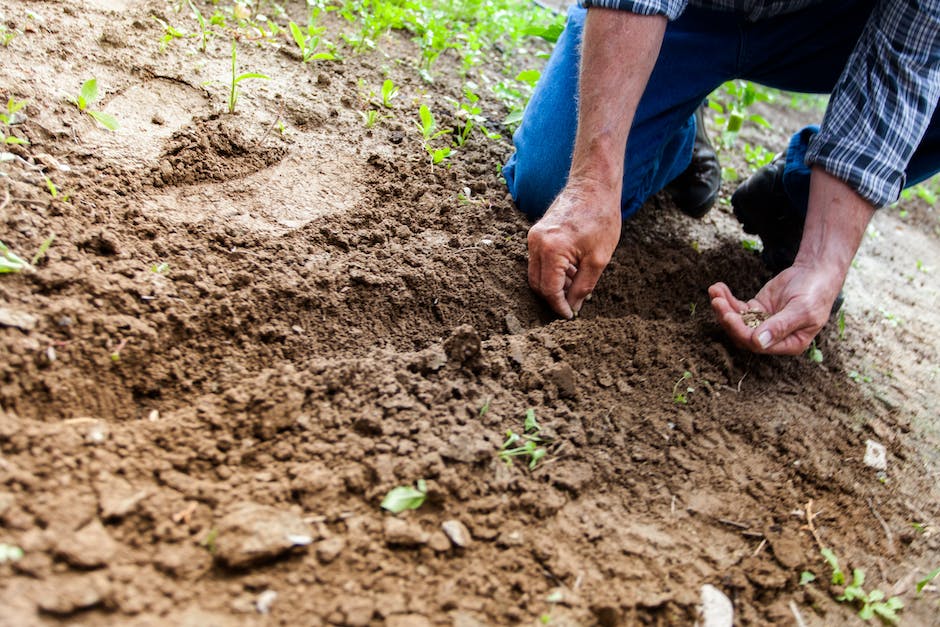
Environmental Impacts of Vertical Farming
Title: Tracing the Environmental Footprint: From Traditional Agriculture to Vertical Farming
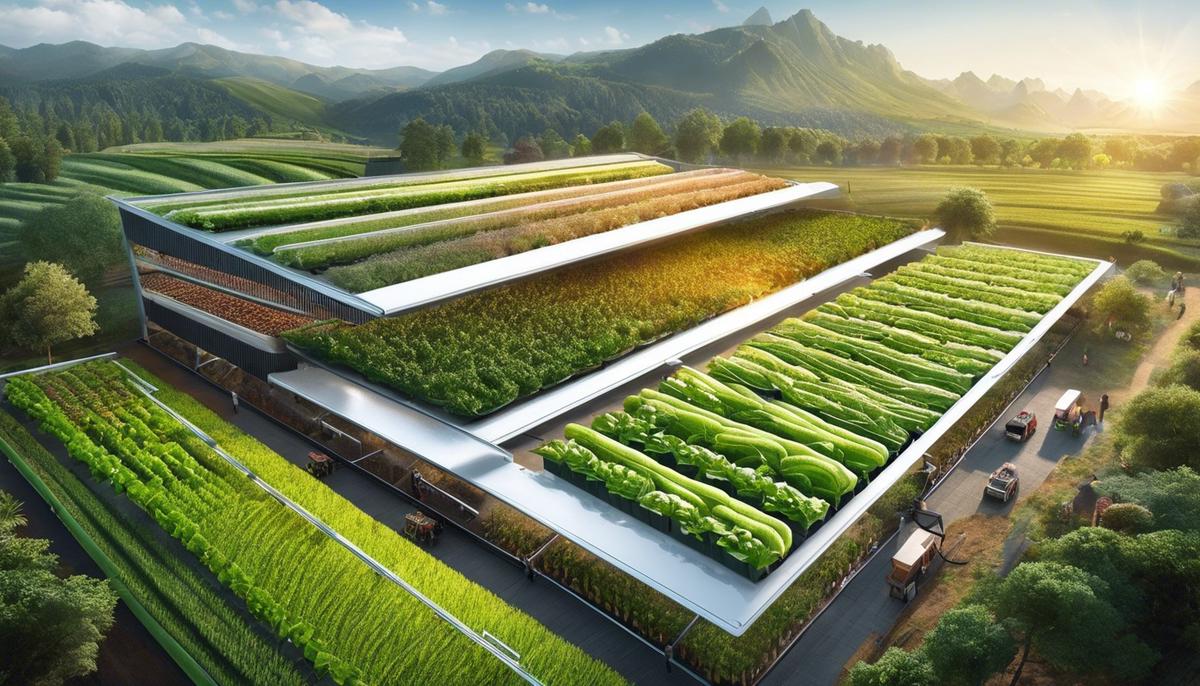
Economic and Social Implications of Vertical Farming
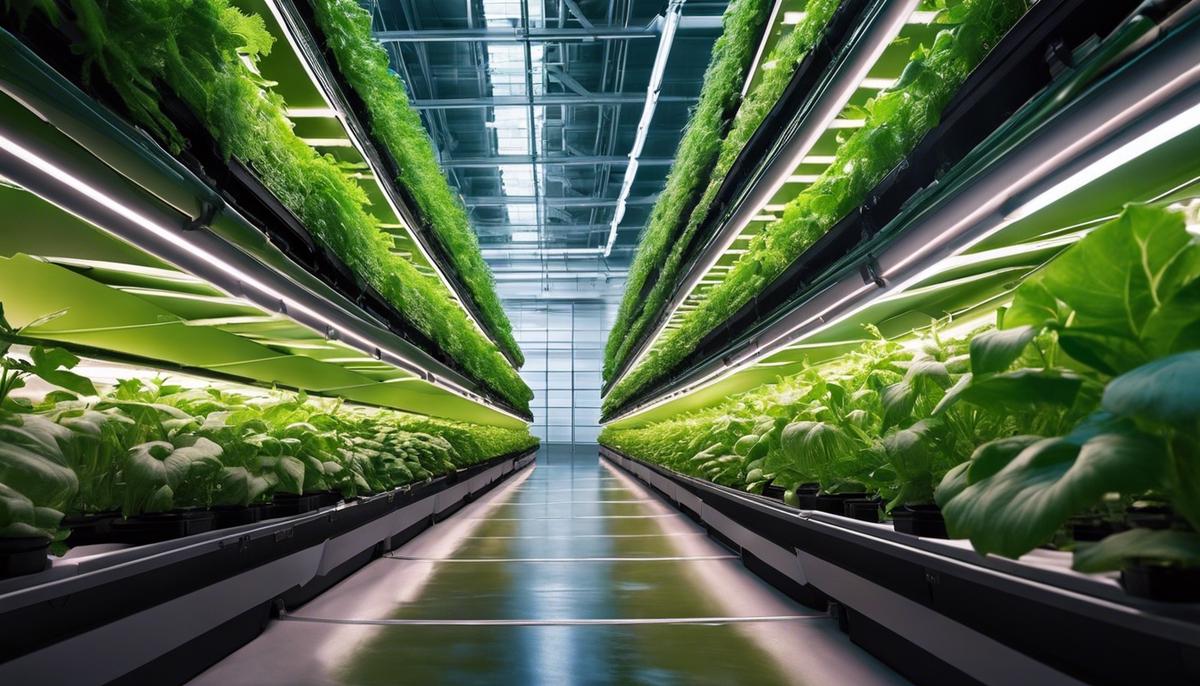
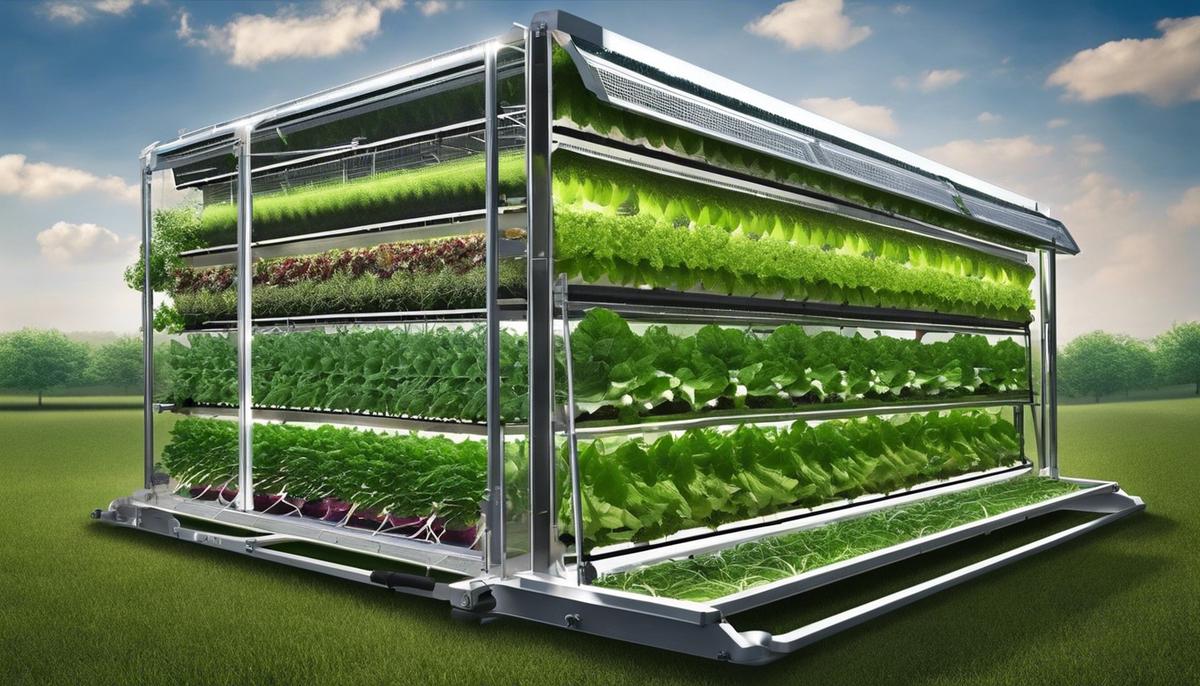
Vertical farming systems
Principles of Vertical Farming
A Deep Dive into the Design and Implementation of Vertical Farming Systems: Integral Considerations

Technological advancements in Vertical Farming
Ascending Agriculture: Harnessing Technological Breakthroughs for Vertical Farming Advancement
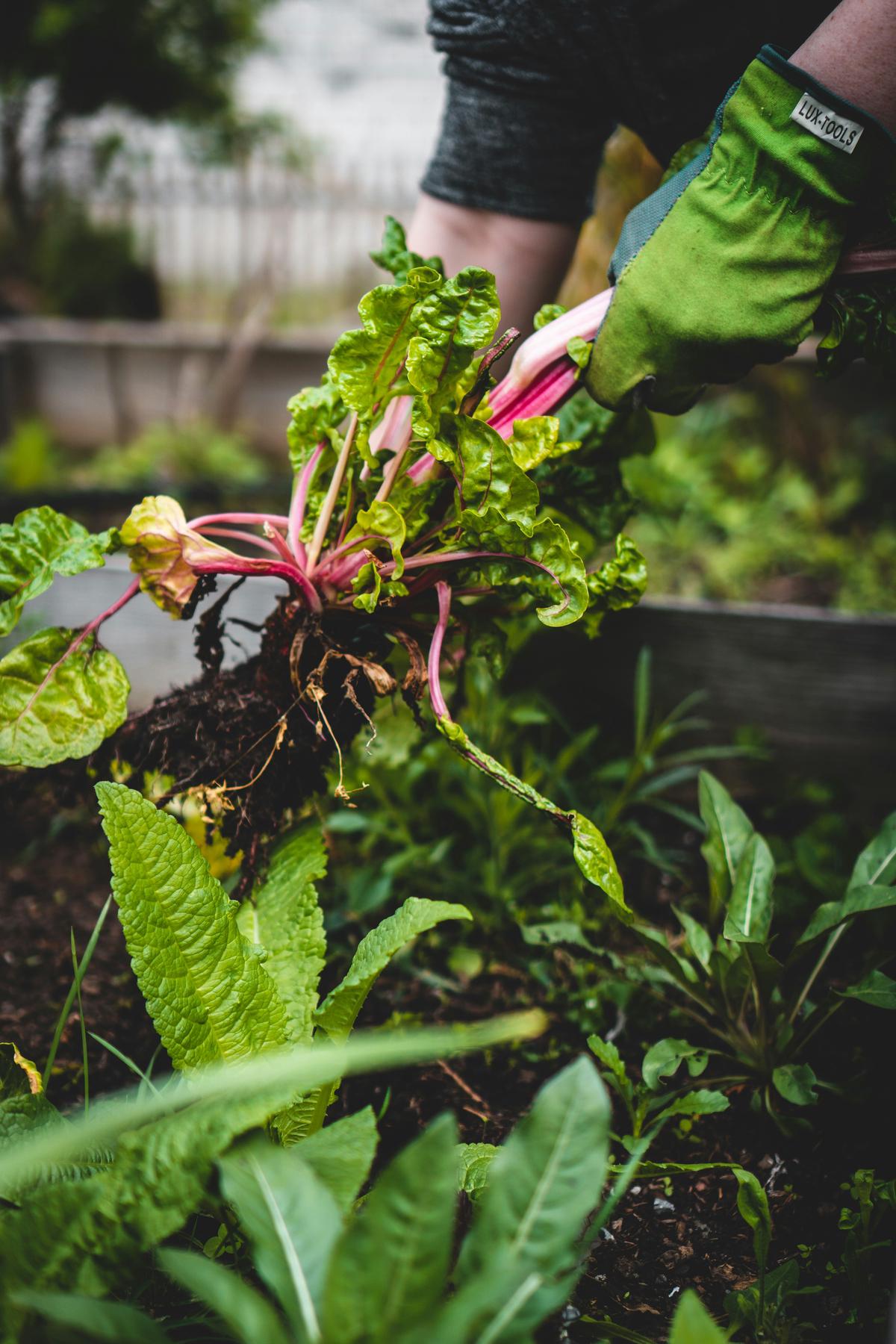
Economic and Environmental Implications of Vertical Farming
The Precision of Vertical Farming
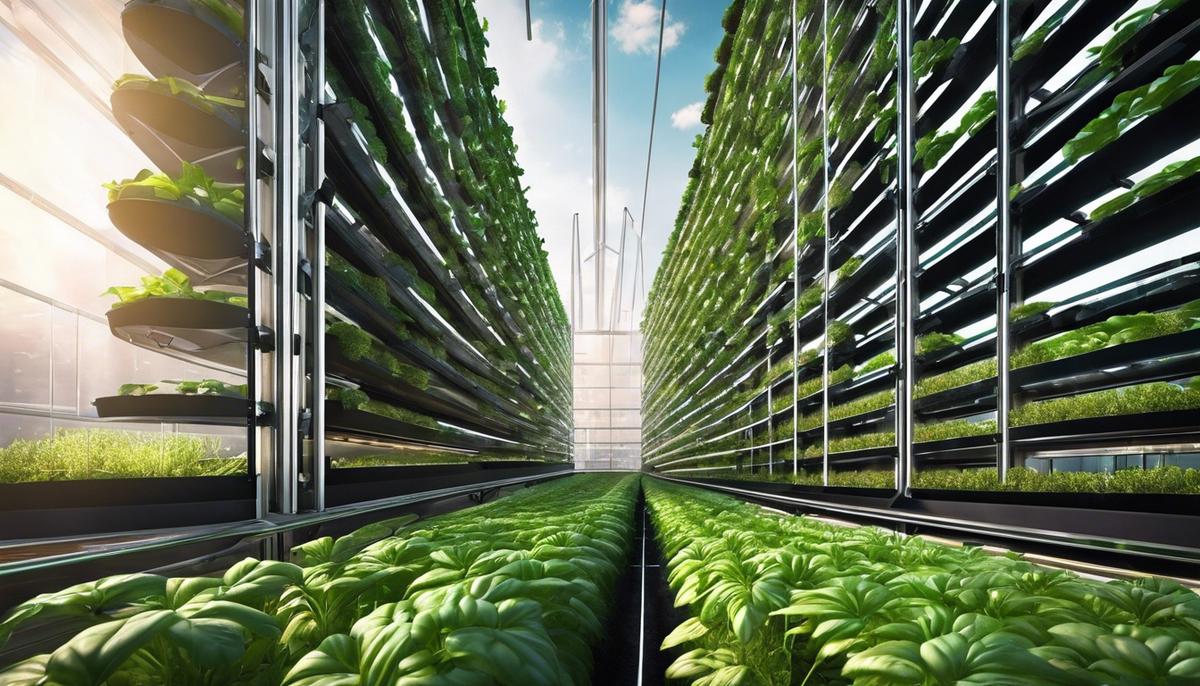
Challenges and Future Prospects of Vertical Farming

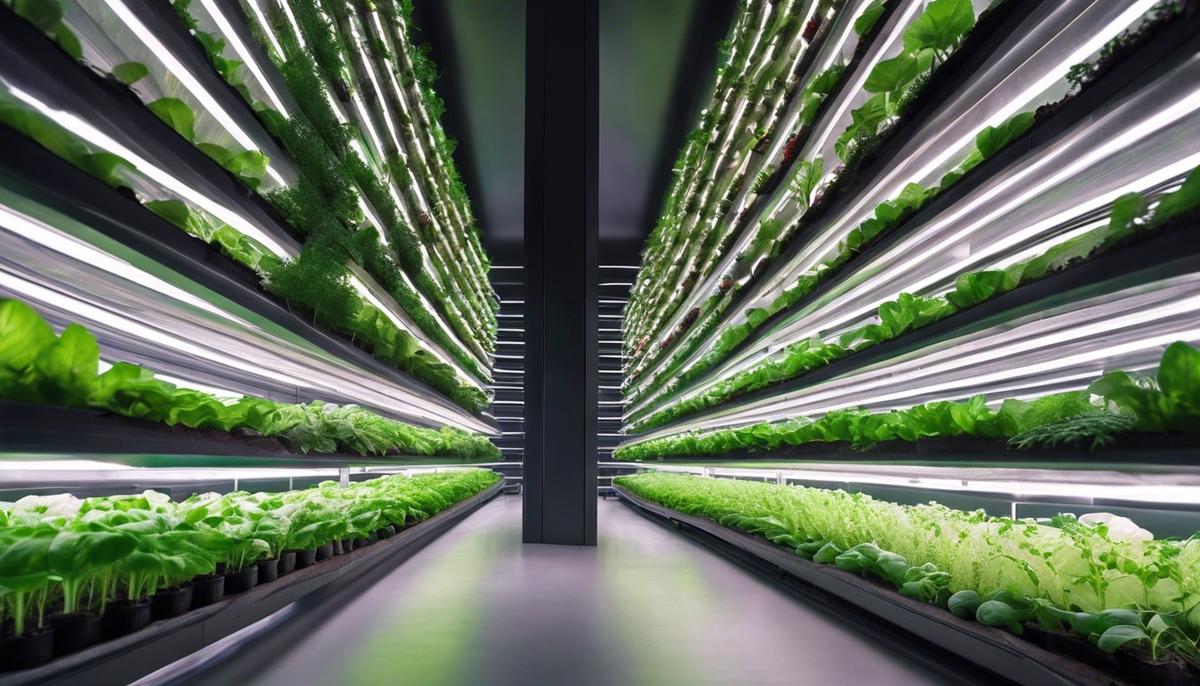
Vertical farming equipment
Understanding the Concept of Vertical Farming Equipment
Title: Fundamental Knowledge Shaping Our Understanding of Vertical Farming Equipment

Innovation and Technology in Vertical Farming Equipment
Innovation: The Catalyst of Change in Vertical Farming Equipment

Evaluating the Efficacy of Vertical Farming Equipment

The Future of Vertical Farming Equipment